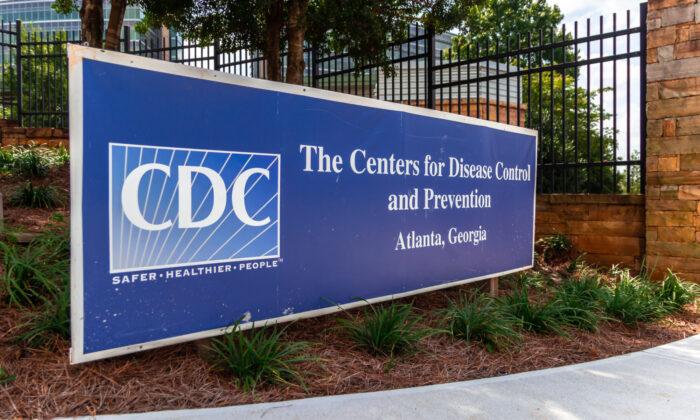The link between severe COVID-19 outcomes and socioeconomic inequality was made clear in the current pandemic.
We function here as prognosticators and contrarians who offer our opinions in the hopes that it may help drive debate and elucidate the issues that may inform decision-making. We are not the reader’s clinician.
We argue strongly for a socioeconomic linkage with COVID-19 and that it should receive a far greater importance than has been given.
But it’s clear that minority populations have been hit harder by COVID-19 in terms of severe outcomes. We argue the same has occurred elsewhere and this is not unique to the United States.
Let’s not fool ourselves: In the United States, Canada, UK, France, and elsewhere, the most vulnerable groups (who have been least able to afford the lockdowns and school closures and have been devastated by these unscientific ineffective policies) have been hit with a double whammy. They have been crushed by the disease itself and the devastating harmful consequences of the absurd and punishing societal lockdown policies. It’s a fact.
Individual Health
We have seen that COVID-19 is hardest on particularly depressed communities who tend to have elevated medical conditions, and there is this interaction and synergism of COVID-19 with larger social and economic factors.The socioeconomic status of a person can negatively impact their lifestyle choices that are often unhealthy in nature, and this is complicated by the reality that, often, this is not by choice but rather based on “need.” Often there are no other options but maladaptive ones. At times, people are limited and must choose among only sub-optimal options.
How does COVID-19 exploit non-communicable disease risk factors such as kidney/renal disease, hypertension, diabetes, cardiovascular disease, chronic respiratory illnesses, cancers, obesity, and so on?
A poor diet dominated by high-sugar high-starch foods (predominantly rice, potatoes, etc.) driven by affordability and the drive for satiety contributes to obesity and the associated health conditions such as diabetes. The seeds of this are often planted in childhood.
Is one at-risk group more differentially impacted and can obesity explain a substantial proportion of the severe sequelae? Is it purely social and economic risk factors that are entrenched deeply in our populations or are there possible preventative factors also at play in some instances? Do these social and economic factors affect the severity of COVID-19 differentially based on type of co-morbidity; for example, will a socially disadvantaged person fare worse with diabetes or kidney disease versus cardiovascular illness?
Missed Opportunities
The various health agencies and their leaders have failed the minority communities by failing to message the need for vitamin D supplements in persons with darker skin color. Evidence suggests that vitamin D has an important immune function role and is a means to mitigate acute respiratory distress due to COVID-19, with patients revealing improved clinical recovery (shorter lengths of stay), lower oxygen requirements, and a reduction in inflammatory marker status.So why have the public health agencies not messaged this to the high-risk groups? Why have the public health agencies not focused on public service messaging on the risk of excess body weight in COVID-19, as the right messaging could have saved tens of thousands of lives?
U.S. public health agencies such as the Centers for Disease Control and Prevention appear to be 9 months to one year behind the science, routinely. They have and continue to squander the opportunity to help mitigate the impact of COVID-19 in their public health roles.
At the same time, we recognize that there’s a certain level of personal responsibility in the decision-making on the part of the individual, and it’s part of this discussion that must not be overlooked, but we would be ignorant to not recognize the direct association between poverty and health and the seemingly strong role that COVID-19 has in exploiting this link.
If COVID-19 (and other pathogens) can and have exploited non-communicable chronic types of illnesses and risks that are a direct result of social and economic factors and/or personal behaviors, we need to understand this clearly and focus on these in our assessment of risk, prognosis, treatment, and policy.
In other words, had the United States or Canada or the UK been healthier populations with a lower burden of non-communicable chronic type diseases (diabetes, renal disease, hypertension, cardiovascular disease, respiratory illnesses, etc.) and had the population been composed of less overweight and obese persons, then the force of severe morbidity and mortality would likely have been far lower from COVID-19.
COVID-19 has shown us that, as a society, we must urgently heighten our resolve to combat hypertension, obesity, diabetes, cardiovascular, renal, and respiratory diseases, as well as cancer.
A Different Approach
Excess mortality will also likely accrue due to hospitals, policy decision-makers, and pandemic responses setting aside treatment for other chronic and pre-exiting conditions to “only” focus on COVID-19.“Stopping COVID at all costs” (zero-COVID) has been a critically flawed approach that has proven to be harmful. This was indeed understandable in the first month of the pandemic (March/April 2020), but this may come back to haunt us as we have prolonged the fixation on COVID-19 to the loss of other equally and even more dangerous illnesses and societal conditions.
Understanding COVID-19 must therefore not involve the traditional unidimensional, dogmatic orthodoxy whereby we simply wish to control the spread of the pathogen or eradicate it.
We argue that if there’s a greater severity and adverse outcomes in socioeconomically disadvantaged populations, then we have to look at this and consider what is happening and focus here with a more nuanced finessed approach as we address targeting the pathogen. This approach will help us now as well as in the future, as we deal with existing, emerging, and re-emerging pathogens.






